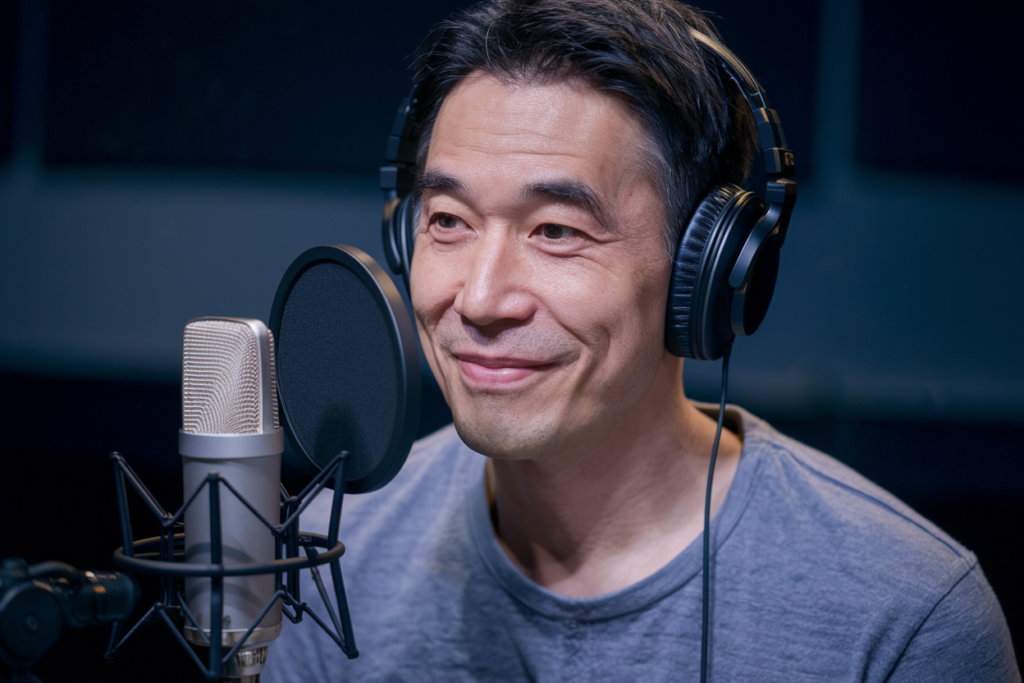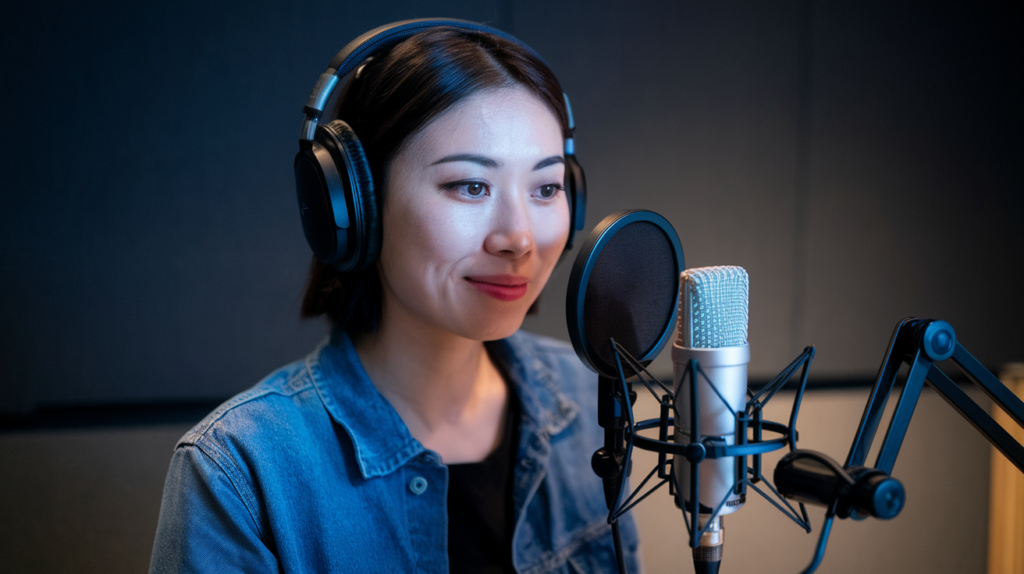Key Takeaways
- Diverse Dialects: The Japanese language features a wide variety of dialects, known as “hōgen,” which vary significantly in pronunciation, vocabulary, and grammar across Japan’s 47 prefectures.
- Regional Characteristics: Major regions like Kansai and Kanto have distinct linguistic traits; Kansai is known for its melodic tones, while Kanto (Tokyo) emphasizes clarity and crispness.
- Cultural Identity: Each dialect reflects the cultural identity and history of its region, playing a crucial role in shaping local pride and community connections among speakers.
- Media Representation: Dialects are prominently featured in Japanese media, enhancing authenticity in storytelling. Voice actors often adapt their performances to align with regional accents for deeper audience engagement.
- Challenges in Learning: Studying Japanese dialects can be complex due to variations in pronunciation, unique vocabularies, different grammar structures, and embedded cultural contexts that require dedicated practice for mastery.
- Importance for Voice Artists: Understanding these dialectal nuances is essential for voice artists seeking to create authentic performances tailored to specific audiences and enhance communication effectiveness.
Ever wondered why Japanese sounds so different depending on where you are in Japan? The dialects of the Japanese language reveal a fascinating tapestry of culture, history, and regional identity. From the melodic tones of Kansai dialect to the crisp enunciation of Tokyo’s standard Japanese, each variation tells its own unique story.
Overview of Dialects of Japanese Language
Japanese features a rich tapestry of dialects, each with distinct characteristics that reflect regional culture and identity. These dialects, known as “hōgen,” vary significantly across Japan’s 47 prefectures. You’ll find variations in vocabulary, pronunciation, and even grammar.
The Kansai dialect stands out for its melodic tones and expressive intonation. In contrast, Tokyo’s standard Japanese emphasizes clarity and crisp enunciation. This difference highlights how language evolves based on geographical influences.
Another notable example is the Hokkaido dialect, which incorporates elements from both traditional Japanese and indigenous Ainu language. Similarly, the Okinawan dialect showcases unique sounds and vocabulary shaped by its history and isolation.
Understanding these dialects enriches your appreciation of Japanese culture. Each one tells a story about the people who speak it, connecting you to their history and traditions. Exploring these nuances can enhance your experience whether you’re learning the language or engaging with native speakers.
In voiceover work, recognizing these differences becomes essential when crafting authentic performances tailored to specific audiences. Whether you’re seeking a friendly tone from Kansai or a more formal delivery from Tokyo, understanding these regional subtleties ensures effective communication in every project.
Embrace the diversity within the Japanese language as you navigate through its various dialects; it’s not just about words—it’s about connection and expression too.
Geographic Distribution
The Japanese language showcases a fascinating geographic distribution of dialects, each with its own unique flavor. Understanding this distribution helps you appreciate the cultural richness and diversity that these dialects represent.
Major Regions
Major regions in Japan display distinct dialects that reflect local customs and traditions. The Kansai region, encompassing cities like Osaka and Kyoto, is known for its warm and melodious tones. In contrast, the Kanto region around Tokyo features standard Japanese with crisp enunciation. Other significant areas include:
- Tohoku: Dialects here often feature vowel elongation.
- Chubu: This area includes varied dialects ranging from Nagoya to the mountains.
- Kyushu: Known for its unique expressions influenced by historical interactions.
These major regional differences influence how voice actors tailor their performances to resonate with local audiences.
Minor Regions
Minor regions also contribute valuable variations to the Japanese linguistic landscape. These dialects may not have as wide a reach but offer rich insights into local identity. Some examples include:
- Okinawa: Home to an isolated dialect shaped by history.
- Hokkaido: Contains elements from indigenous Ainu languages.
- Shikoku: Features softer pronunciations and distinct vocabulary.
Voice artists must recognize these nuances when performing in different locales, ensuring authenticity in their delivery. The subtleties of minor regional accents can significantly impact audience engagement during voiceovers or other forms of media communication.
Understanding both major and minor regions enhances your appreciation of the Japanese language’s depth while informing effective strategies for voiceover talent seeking to connect with diverse audiences across Japan’s vibrant tapestry of dialects.
Linguistic Features
Understanding the linguistic features of Japanese dialects enhances your grasp of the language’s richness. Each dialect showcases unique characteristics in pronunciation, vocabulary, and grammar.
Phonetic Variations
Phonetic variations stand out across Japan’s dialects. For instance, Kansai speakers often use a softer intonation compared to Tokyo’s standard Japanese. You might notice that vowels stretch longer in certain regions, which can alter meanings and expressions. This melodic quality can make voiceover performances more engaging when capturing regional nuances. Knowing these variations helps voice actors tailor their delivery for authenticity and resonance with local audiences.
Vocabulary Differences
Vocabulary differences significantly impact communication within Japanese dialects. Certain terms may be unique to specific areas; for example, words used in Hokkaido often incorporate indigenous Ainu elements. Meanwhile, Okinawan vocabulary reflects its distinct cultural heritage and influences from neighboring regions. As a voice actor or artist, understanding these vocabularies allows you to choose appropriate terms that align with your audience’s expectations and sentiments, enhancing connection through authentic representation of the language’s diversity.
Cultural Significance
Understanding the cultural significance of Japanese dialects reveals much about regional identity and local customs. Each dialect, or “hōgen,” carries its own story, reflecting the unique history and traditions of its speakers.
Influence on Identity
Dialects play a crucial role in shaping personal and community identities. When you hear someone speak a specific dialect, it often evokes a sense of belonging and connection to their region. For example, Kansai speakers pride themselves on their distinctive intonation and humor, which differ significantly from Tokyo’s standard Japanese. This regional pride not only reinforces local culture but also influences how individuals see themselves within the broader context of Japan.
Many people associate certain traits with different dialects. A voice artist using a Kansai accent might convey warmth and friendliness, while a voice actor with a standard Tokyo accent may come across as more formal or authoritative. Recognizing these nuances helps voice talents connect authentically with their audiences by tapping into cultural perceptions tied to each dialect.
Dialects in Media
Media representation plays an essential role in showcasing Japan’s diverse dialects. From anime to television dramas, each production often incorporates regional accents to enhance authenticity and relatability. When characters speak in their native dialects, it adds depth to storytelling and allows viewers to engage more fully with the narrative.
Voice actors frequently adapt their performances based on regional language variations. This skill enhances character portrayal by ensuring that dialogue feels genuine, resonating strongly with local audiences who appreciate hearing familiar speech patterns. Moreover, utilizing distinct dialects can broaden appeal; for instance, incorporating Okinawan phrases brings an element of uniqueness that sets productions apart.
Incorporating these rich linguistic features into media encourages appreciation for Japan’s diversity while providing opportunities for voice over talent to showcase versatility in performances—making every project feel fresh and engaging for listeners everywhere.
Challenges in Studying Dialects
Studying Japanese dialects presents unique challenges that can complicate your understanding and appreciation of the language.
Variations in Pronunciation
Dialects exhibit significant differences in pronunciation. For instance, speakers from Kansai often use softer intonations compared to those from Tokyo. This variance can confuse learners who are accustomed only to standard Japanese. Without exposure to these regional sounds, grasping nuances becomes difficult.
Distinct Vocabulary
Each dialect boasts its own set of vocabulary that doesn’t always translate directly into standard Japanese. Terms specific to regions like Hokkaido or Okinawa may not be familiar even to native speakers from other areas. This lack of shared vocabulary makes communication challenging and might lead to misunderstandings.
Grammar Differences
Grammar structures vary across dialects too. Some dialects incorporate unique grammatical forms or sentence constructions that differ significantly from the standard version. Navigating these variations requires additional effort and study, which can be overwhelming for learners.
Cultural Context
Cultural references embedded within dialects offer another layer of complexity. Dialects reflect local customs, history, and identity—factors that influence how people express themselves verbally. Understanding these cultural contexts is crucial but often overlooked in traditional language studies.
Media Representation
Media plays a pivotal role in showcasing different dialects through character portrayals by voice actors or voice artists. However, media representation may not accurately capture all aspects of a dialect’s richness or its local nuances, leading to misconceptions about how it sounds or is used in everyday conversation.
These challenges highlight the need for dedicated practice when studying Japanese dialects if you want authentic interpretations as a voice artist or voice talent in your projects. Embracing this complexity enhances your skill set and prepares you for diverse roles where regional authenticity matters most.
Conclusion
Exploring the dialects of Japanese not only broadens your understanding of the language but also deepens your connection to Japan’s rich cultural fabric. Each dialect offers a glimpse into regional identities and histories that shape local customs and traditions.
As you navigate through these diverse variations you’ll discover how they enhance storytelling in media and voiceover performances. Embracing this linguistic diversity enriches your appreciation for authenticity in communication, allowing you to engage more meaningfully with Japanese culture. Whether you’re studying the language or enjoying its media, recognizing these dialects will illuminate the intricate tapestry that makes Japan unique.
Frequently Asked Questions
What are Japanese dialects, or “hōgen”?
Japanese dialects, known as “hōgen,” are regional variations of the language that reflect local culture and history. Each of Japan’s 47 prefectures has its own unique dialect, featuring differences in pronunciation, vocabulary, and grammar.
How do Kansai and Kanto dialects differ?
The Kansai dialect is characterized by its melodic tones and softer intonation, while Kanto (Tokyo’s standard Japanese) features crisp enunciation. These differences influence communication styles and cultural expressions in their respective regions.
Why is understanding Japanese dialects important?
Understanding these dialects enhances appreciation for Japanese culture by revealing narratives about the speakers’ identities. They also play a significant role in voice acting, allowing performers to connect authentically with local audiences.
What challenges exist when studying Japanese dialects?
Studying Japanese dialects can be challenging due to significant variations in pronunciation, distinct vocabularies that may not translate directly into standard Japanese, and unique grammatical structures. Cultural contexts must also be understood to grasp their full significance.
How do media representations impact perceptions of dialects?
Media representation can sometimes oversimplify or misrepresent the richness of Japanese dialects. While productions often incorporate regional accents for authenticity, they may not fully capture the nuances that define each dialect’s uniqueness.







